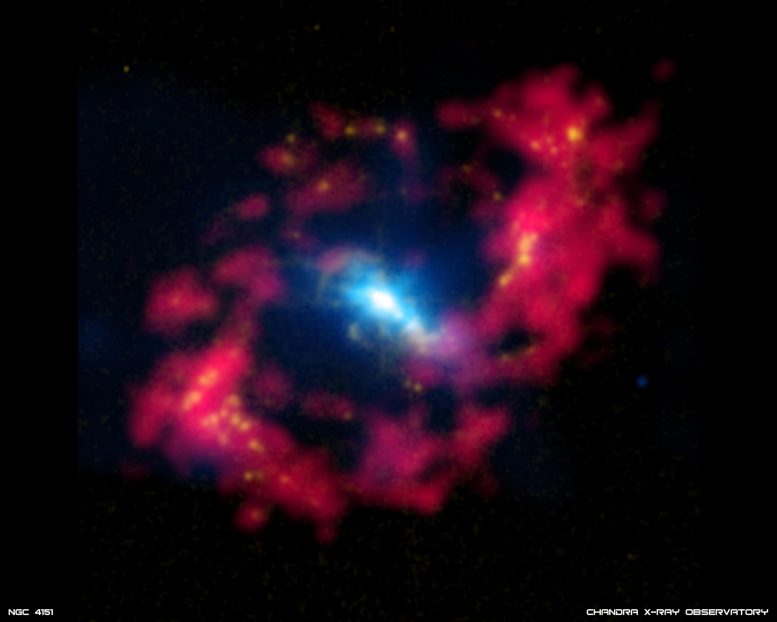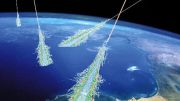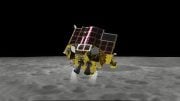Using the W. M. Keck Observatory, scientists have developed a new way of measuring precise distances to galaxies tens of millions of light-years away.
The method is similar to what land surveyors use on Earth, by measuring the physical and angular, or ‘apparent’, size of a standard ruler in the galaxy, to calibrate the distance from this information.
The research, which is published in the journal Nature, was used to identify the accurate distance of the nearby NGC4151 galaxy, which wasn’t previously available. The galaxy NGC4151, which is dubbed the ‘Eye of Sauron’ by astronomers for its similarity to the film depiction of the eye of the character in The Lord of the Rings, is important for accurately measuring black hole masses.
Recently reported distances range from 4 to 29 megaparsecs, but using this new method the researchers calculated the distance of 19 megaparsecs to the supermassive black hole.
Indeed, as in the famous saga, a ring plays a crucial role in this new measurement. All big galaxies in the universe host a supermassive black hole in their center and in about a tenth of all galaxies, these supermassive black holes are growing by swallowing huge amounts of gas and dust from their surrounding environments. In this process, the material heats up and becomes very bright — becoming the most energetic sources of emission in the universe known as active galactic nuclei (AGN).
The hot dust forms a ring around the supermassive black hole and emits infrared radiation, which the researchers used as the ruler. However, the apparent size of this ring is so small that the observations were carried out using infrared interferometry to combine W. M. Keck Observatory’s twin 10-meter telescopes, to achieve the resolution power of an 85m (279ft) telescope.
To measure the physical size of the dusty ring, the researchers measured the time delay between the emission of light from very close to the black hole and the infrared emission. This delay is the distance the light has to travel (at the speed of light) from close to the black hole out to the hot dust.
By combining this physical size of the dust ring with the apparent size measured with the data from the Keck interferometer, the researchers were able to determine a distance to the galaxy NGC 4151.
Lead researcher Dr. Honig says: “One of the key findings is that the distance determined in this new fashion is quite precise — with only about 10 percent uncertainty. In fact, if the current result for NGC 4151 holds for other objects, it can potentially beat any other current methods to reach the same precision to determine distances for remote galaxies directly based on simple geometrical principles. Moreover, it can be readily used on many more sources than the current most precise method.”
“Such distances are key in pinning down the cosmological parameters that characterize our universe or for accurately measuring black hole masses. Indeed, NGC 4151 is a crucial anchor to calibrate various techniques to estimate black hole masses. Our new distance implies that these masses may have been systematically underestimated by 40 percent.”
Dr. Honig, together with colleagues in Denmark and Japan, is currently setting up a new program to extend their work to many more AGN. The goal is to establish precise distances to a dozen galaxies in this new way and use them to constrain cosmological parameters to within a few percent. In combination with other measurements, this will provide a better understanding of the history of expansion of our universe.
Reference: “A dust-parallax distance of 19 megaparsecs to the supermassive black hole in NGC 4151” by Sebastian F. Hönig, Darach Watson, Makoto Kishimoto and Jens Hjorth, 26 November 2014, Nature.
DOI: 10.1038/nature13914










Looking forward to a more accurate (and hopefully three-dimensional) map of our local supercluster in the near future.